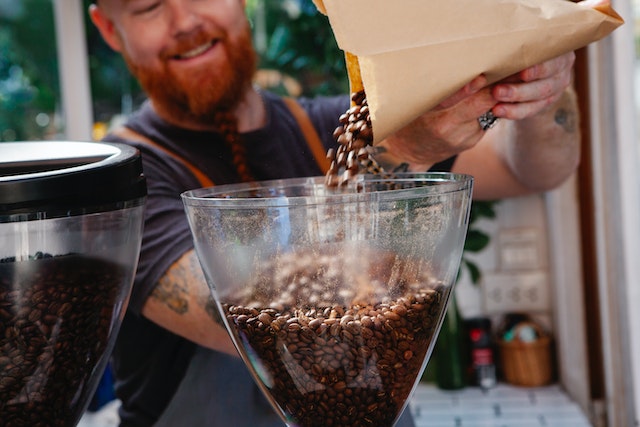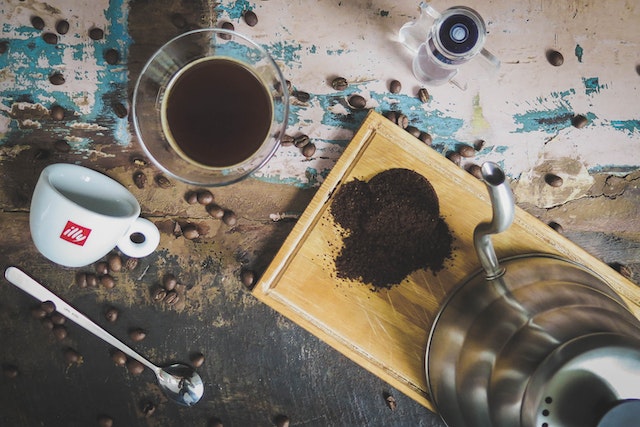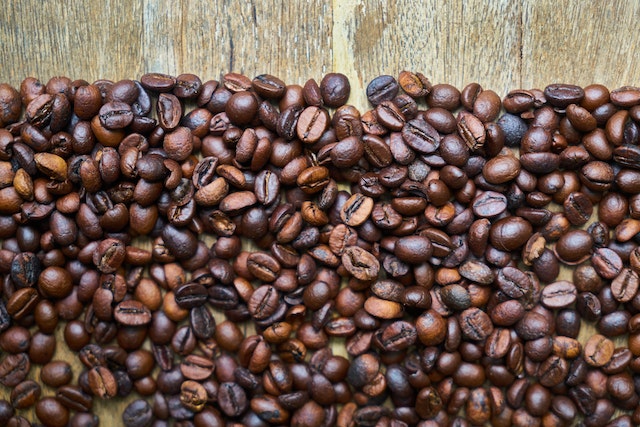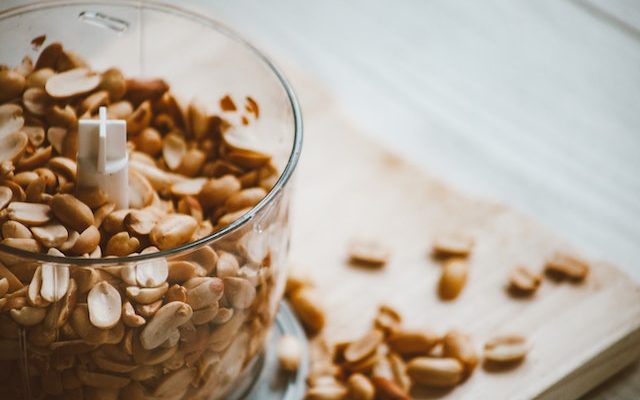Have you ever wanted to make the perfect cup of coffee, but didn’t have a grinder? Grinding your own coffee beans is an essential step for brewing delicious, flavorful cups of coffee. And it’s easy—even without a grinder! In this blog post, we’re going to explore some alternative methods for grinding coffee beans without a traditional grinder. We’ll discuss the different equipment and techniques required and provide tips on how to grind them correctly so that you can enjoy an excellent cup of joe from freshly ground beans every time.
Table of Contents
How to grind coffee beans without a grinder – Need Your Morning Coffee Fix Fast? Keep reading…
Is It Possible To Grind Coffee Beans Without A Grinder?
Yes, it is possible to grind coffee beans without a grinder. Depending on the tools you have at your disposal, there are different methods that can be used. For example, a food processor or blender can be used to grind the beans into coarse or fine grounds. Alternatively, if you don’t have access to any electric kitchen appliances, you can use various objects such as a mortar and pestle, an empty bottle with rolling pin inside it, or even a hand drill.
Whatever method you choose however, grinding without a grinder will take more time and effort than using one of these machines. It’s also important to remember that freshly ground coffee beans will always taste better than pre-ground ones! So while it is possible to grind coffee beans without a grinder, it is still recommended that you invest in one if you are serious about getting the best out of your coffee.
It’s also worth noting that when using any of these methods, be sure to work slowly and carefully as grinding too quickly or violently can cause heat buildup which will affect the flavour of your coffee negatively. So while it may be possible to grind coffee beans without a grinder, it is essential that you take your time and work carefully in order to get the best results.
What Are The Benefits Of Grinding Your Own Coffee Beans?

Grinding your own coffee beans offers numerous benefits to the average consumer. Listing them here gives you a better understanding of why it’s beneficial:
– Fresher Coffee: Grinding your own coffee beans ensures that the coffee is as fresh as possible, letting you enjoy it at its fullest potential with every sip.
– Cost Savings: Since whole beans last longer than pre-ground coffee, you will save money in the long run by grinding your own beans.
– More Flavorful Coffee: When you grind your own coffee, each cup can be tailored to your exact desired flavor level. Coarse or fine grinds let you adjust how much flavor comes out of each bean, giving you more control over the taste of your coffee.
– Easy to Use: Grinders are incredibly user friendly and simple to use, so you don’t have to worry about spending extra time preparing the beans for each cup.
– More Variety: Being able to grind your own beans gives you access to more varieties of coffee than pre-ground beans can offer. From traditional Arabica beans to flavored coffees, grinding your own will allow you to explore different flavor profiles with each cup.
Grinding your own coffee beans is an easy way to give yourself a fresh and flavorful cup of coffee every morning. Enjoy the savings and convenience that come along with it!
Are There Any Drawbacks To Grinding Coffee Beans Without A Grinder?
One of the main drawbacks to grinding coffee beans without a grinder is that it is time consuming and can be difficult. Without an electric powered grinder, you must manually grind the beans with a mortar and pestle or using some other tool such as a rolling pin or food processor. This process takes patience and skill, meaning you may not always get a consistent grind size or texture. It also takes considerably longer than using an electric grinder, which can make it inconvenient if you’re in a hurry to get your morning cup of coffee. Additionally, pre-ground coffee often has much less flavor and aroma than freshly ground beans because the oils and aromas quickly fade away after grinding.
Overall, while it is certainly possible to grind coffee beans without a grinder, it is not ideal. For the best flavor and aroma, an electric grinder is recommended. With such a tool, you can easily get a consistent grind size and texture, as well as benefit from the freshness of freshly ground beans.
What Do You Need To Grind Coffee Beans Without A Grinder?

If you don’t have a coffee grinder, but still want to grind your own coffee beans at home, there are several methods available. Here is a list of items that can be used to grind coffee without a traditional grinder:
– Blender or food processor – these kitchen items are designed for grinding and puréeing food, so they work just as well for grinding coffee beans. Add some fresh beans to the blender or food processor and slowly pulse until the desired consistency is reached.
– Mortar and pestle – an ancient method still in use today, this tool has been around since Roman times and works primarily by crushing rather than grinding the whole bean into small pieces. Start with coarsely ground pieces if desired and work your way down to a finer grind.
– Rolling pin – for a coarse grind, place the beans inside a sealed plastic bag (such as a zip-top freezer bag) and roll over them with a rolling pin until the desired consistency is reached.
– Coffee Pot – some coffee makers have blades that can be used to grind whole beans. If yours does, simply add the appropriate number of beans in the hopper and turn on the machine. The result will be freshly ground coffee without needing an extra grinder.
– Hammer – if you don’t mind making some noise, using a hammer or mallet to crush your beans will get you surprisingly close to a consistent grind size. Place your beans in a sealed plastic bag and hit them with the hammer or mallet until you achieve the desired consistency.
With these methods, you don’t need a grinder to enjoy freshly ground coffee beans at home. All that matters is that you have access to whole bean coffee and one of the items listed above! Happy grinding!
How To Grind Coffee Beans Without A Grinder?
If you don’t have a grinder, there are several methods you can use to grind your coffee beans without one. Here is a list of the most common ways to grind coffee beans without a grinder:
– Use a blender or food processor – Pulse the beans in short bursts until they reach the desired consistency. Be sure not to over-process them!
– Use a mortar and pestle – This is an ancient method that requires some elbow grease, but it works well if you want something more hands-on than a machine.
– Use a rolling pin – Place the beans on a flat surface and roll over them with the rolling pin until they reach your desired size/consistency.
– Use a hammer – Place the beans in a plastic bag and gently tap them with a hammer until they reach the desired size/consistency.
– Use a knife or scissors – Slice the beans into smaller pieces by using a knife or scissors. Be careful not to chop them too finely, as this can lead to over-extraction of the flavors!
How to grind coffee beans without a grinder? With any of these methods, it is important to remember that grinding your coffee beans too finely can lead to an overly bitter cup of coffee, so be sure not to overdo it. It is also worth noting that all of these methods may take some practice before you get it just right!
>>> You might also like:
Best coffee maker with grinder
What Is The Best Way To Grind Coffee Beans If You Don’t Have A Grinder?

If you don’t have a coffee grinder at home, there are still several ways to grind your beans. Here is a list of the best methods for grinding coffee beans without a grinder:
– Using a Blender or Food Processor: This is perhaps the most efficient way to grind coffee beans if you don’t have a grinder. Simply add your desired amount of beans to the blender or food processor and pulse until it reaches your desired consistency. Be sure to keep an eye on it so that you achieve the right texture without over-grinding!
– Mortar and Pestle: This method takes some elbow grease, but mortar and pestles are great tools for crushing and grinding things like herbs, spices and coffee beans. If you have one lying around, it can be a good way to grind up your beans with minimal effort.
– Rolling Pin: A rolling pin is another great tool for grinding coffee beans if you don’t have a grinder. Simply place the beans between two pieces of parchment paper or plastic wrap and roll over them until they reach your desired consistency.
– Hammer: Using a hammer is the easiest way to crush coffee beans if you don’t have a grinder or any other appliance available. Place the desired amount of beans in a sealed bag first – preferably something that won’t tear easily! – before hitting it with the hammer until they reach your preferred size and texture.
Whichever method you choose to go with, make sure that you are careful not to over-grind the beans. It’s better to have them a bit too coarse than too fine – otherwise, your coffee may taste bitter and unpleasant. Experiment with different methods until you find the one that works best for you!
How Do You Know When The Beans Are Ground Finely Enough?

The ideal grind for making espresso is a very fine, consistent powder. Generally speaking, the finer the grind, the better. To determine if your beans are ground finely enough, try this simple test: take a pinch of grounds between your thumb and forefinger and rub it lightly together—if it feels like powdered sugar or flour when rubbed together, you’ve got an ideal grind for espresso. If the grounds still feel gritty or chunky in any way, they may not be ground finely enough.
Test again by grinding some additional coffee to make sure that all of the beans are as fine as possible before using them to brew espresso. With practice and patience, you’ll soon become adept at judging how finely your beans need to be ground, and be able to adjust the grind accordingly. The aim is always for a consistent powder-like texture. Keep in mind that different machines may require slightly different grind sizes, so it’s important to familiarize yourself with your own machine and its settings for the best espresso results. Once you’ve achieved your desired grind consistency, you can start making delicious espresso shots!
How Do You Store Ground Coffee Beans?
The method of storing coffee beans depends on their degree of roasting. Unroasted or light-roast coffee beans should be stored in an airtight container at room temperature, away from direct sunlight and moisture. You can also store these beans in the refrigerator or freezer, but remember to take them out several hours before use as they will absorb moisture and odors if left too long. Darker roast coffees are less sensitive to storage and can last for a few months without much degradation if stored correctly. To store dark-roast coffee, put it into an airtight container and keep it at room temperature away from heat, light and moisture.
If you want your ground coffee to stay fresh longer, you may consider vacuum sealing it after it has cooled down completely. Vacuum sealing helps to remove the oxygen from the container and protects the coffee grounds from moisture, oxidation, and spoilage. For maximum shelf life, store your ground coffee in a cool and dry place away from direct sunlight. Also, remember to keep it tightly sealed after each use. By following these guidelines you can ensure that your ground coffee beans stay fresh and flavorful for many months.
>>> See more: How To Grind Coffee Beans (How to grind coffee beans without a grinder?)
Do pre-ground coffee beans work just as well?
Pre-ground coffee beans have their advantages and disadvantages compared to grinding the beans yourself. On one hand, pre-ground coffee is convenient as it eliminates the need for a dedicated grinder. But on the other hand, freshness can be an issue with pre-ground coffee since the flavors of ground beans dissipate over time. Additionally, due to differences in individual grinders and techniques when grinding, pre-ground coffee can taste different than if you were to grind your own beans at home. Therefore, while pre-ground coffee may work just as well as freshly ground beans, it is important to consider these factors before making a decision.
Conclusion: How to grind coffee beans without a grinder? If you’re in a bind and need to grind coffee beans without a grinder, there are several methods you can try. One is to use a mortar and pestle, another is to use a knife, and the last resort is to use a blender or food processor. All of these methods will take more time and effort than using an electric grinder, but they will get the job done in a pinch. So next time you’re faced with the dilemma of how to grind coffee beans without a grinder, remember that there are options available to you. Thanks for reading!
Welcome Cafe Toscana Restaurant! Here you’ll find posts about everything from our latest news and events to our favorite recipes. We hope you enjoy reading and thanks for stopping by!

